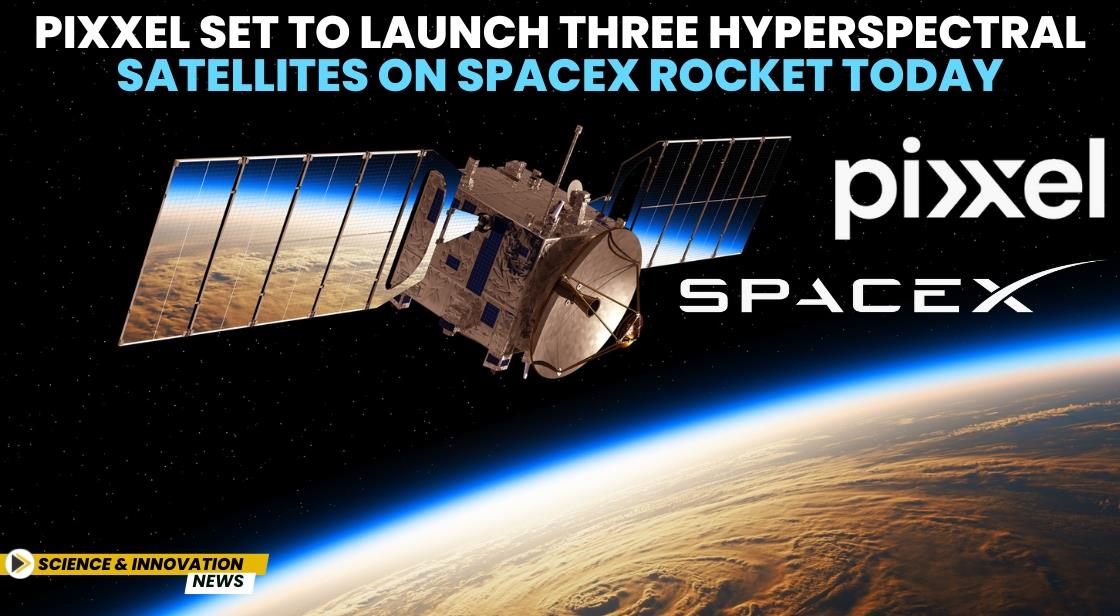Pixxel Set to Launch Three Hyperspectral Satellites on SpaceX Rocket Today

News Synopsis
Bengaluru-based space-tech start-up Pixxel is making headlines with the launch of three cutting-edge hyperspectral satellites named Fireflies. The satellites are set to be launched on January 14 aboard SpaceX's Transporter-12 mission from California. With this deployment, Pixxel aims to revolutionize satellite imaging technology, setting a new benchmark for commercial hyperspectral imaging systems.
Advanced Technology: Redefining Hyperspectral Imaging
The Fireflies satellites are equipped with sensors six times sharper than the current 30-meter standard found in most hyperspectral imaging systems. This unparalleled precision allows the satellites to detect hidden patterns and anomalies with incredible accuracy. Pixxel has declared Fireflies as the world's most advanced commercial hyperspectral imaging system, capable of providing insights with unmatched detail.
Launch Plans and Deployment Timeline
The three Fireflies satellites, each weighing 60 kg, are the first of six planned launches in 2025. Pixxel has outlined a comprehensive deployment strategy:
-
First Batch: Three satellites launching aboard SpaceX’s Transporter-12 mission.
-
Second Batch: An additional three satellites to be launched in the second quarter of the year.
Once in orbit, these satellites will form part of a constellation in a sun-synchronous orbit at an altitude of approximately 550 km.
Applications and Global Impact
Pixxel’s satellite constellation aims to empower industries and governments worldwide by providing actionable insights to tackle pressing global challenges. Key applications include:
-
Climate Action: Monitoring environmental changes to support climate initiatives.
-
Agriculture: Enhancing precision farming by detecting soil and crop health.
-
Disaster Management: Early detection of natural disasters for better response strategies.
-
Urban Planning: Advanced mapping for sustainable urban development.
By enabling data-driven decision-making, Pixxel’s hyperspectral imaging will play a pivotal role in advancing meaningful climate action and fostering innovation across multiple sectors.
Hyperspectral Imaging: A Leap Forward
Hyperspectral imaging involves capturing data across a wide spectrum of light, far beyond the visible range. With its high-resolution sensors, Pixxel’s Fireflies can analyze features that conventional imaging systems cannot, such as:
-
Detecting mineral compositions.
-
Tracking changes in vegetation.
-
Monitoring water quality and pollutants.
This leap in technology allows for precise and comprehensive environmental monitoring, making it invaluable for governments, industries, and researchers.
Future Vision: Expanding the Fireflies Constellation
Once fully deployed, the Fireflies constellation will establish Pixxel as a global leader in hyperspectral imaging. With plans to expand the constellation further, the company envisions equipping clients with the tools needed to address critical global issues, ranging from climate change to food security.
Pixxel's Commitment to Innovation
Pixxel’s journey from a Bengaluru-based start-up to a key player in space technology underscores its dedication to innovation. By leveraging the power of hyperspectral imaging, the company is setting new standards in satellite technology and contributing to global sustainability efforts.
Conclusion
Pixxel's launch of the Fireflies hyperspectral satellites marks a significant milestone in the evolution of space-based imaging technology. With their advanced sensors capable of detecting minute details with exceptional clarity, these satellites are poised to revolutionize industries ranging from agriculture to climate science. By enabling highly accurate monitoring of environmental changes and natural resources, Pixxel’s Fireflies constellation will empower governments and businesses to make data-driven decisions that address global challenges. As the company continues to expand its satellite fleet, the potential for impactful applications in sustainable development and disaster management grows, cementing Pixxel's position as a key player in the future of space technology. Through its innovative approach, Pixxel is helping to shape a smarter, more sustainable future for our planet.
You May Like









